Summer pests: Here's 17 insects, arachnids you should be aware of in Texas
Summer officially starts Tuesday, June 21, but Texas pests might have missed the memo.
With summer rain, followed by summer heat, insects and arachnids have started to become a bother for Texans.
While some are innocent in nature, others can hurt with a sting or bite. Here's a guide to know what pest is buzzing by your ear or crawling on your shoe.
Aphids
Aphids are small sap-sucking insects mostly found in yards and gardens. They are pear-shaped and can be green, black, red, yellow, brown or gray in color.
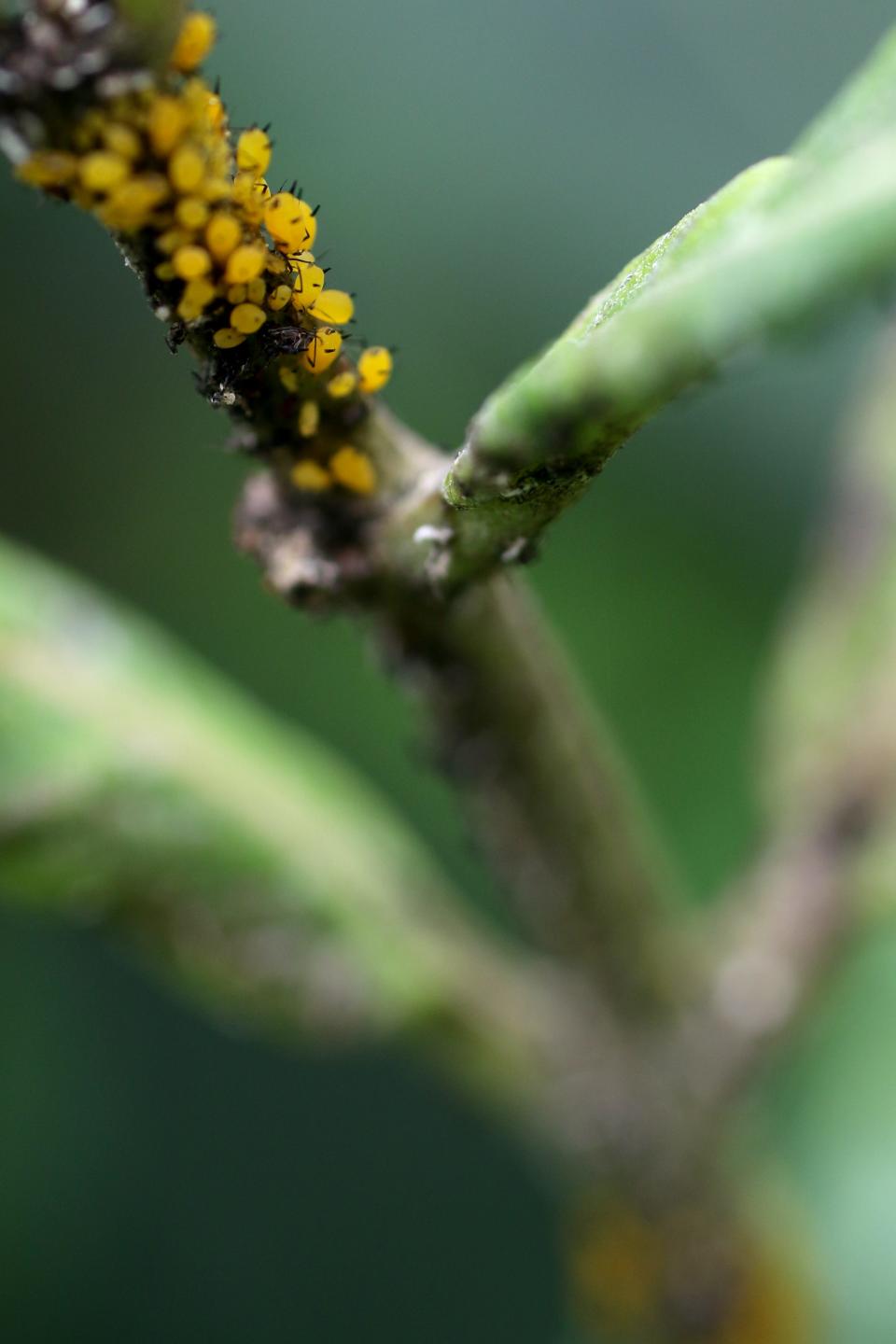
Many plants in Texas landscapes are suitable hosts for aphids, including bedding plants, ash, barberry, boxelder, crape myrtle, jasmine, flowering almond, gardenia, hibiscus, hydrangea, mountain ash, oaks, oleander, peach, pear, pecan, pines, roses, vegetables and viburnum.
Are they harmful? Aphids are harmless to humans, but they are harmful to plants. They suck sap from tender leaves and stems, weakening them and causing stunted growth.
How to get rid of them: A few ways to get rid of aphids include spraying them with water, knocking them into a bucket of soapy water, spraying plants with a soap-and-water mixture or essential oils, employing natural predators including ladybugs or green lacewings, and growing plants that repel or trap aphids.
Bees
Some people think they're adorable, while others flee in terror to avoid being stung.
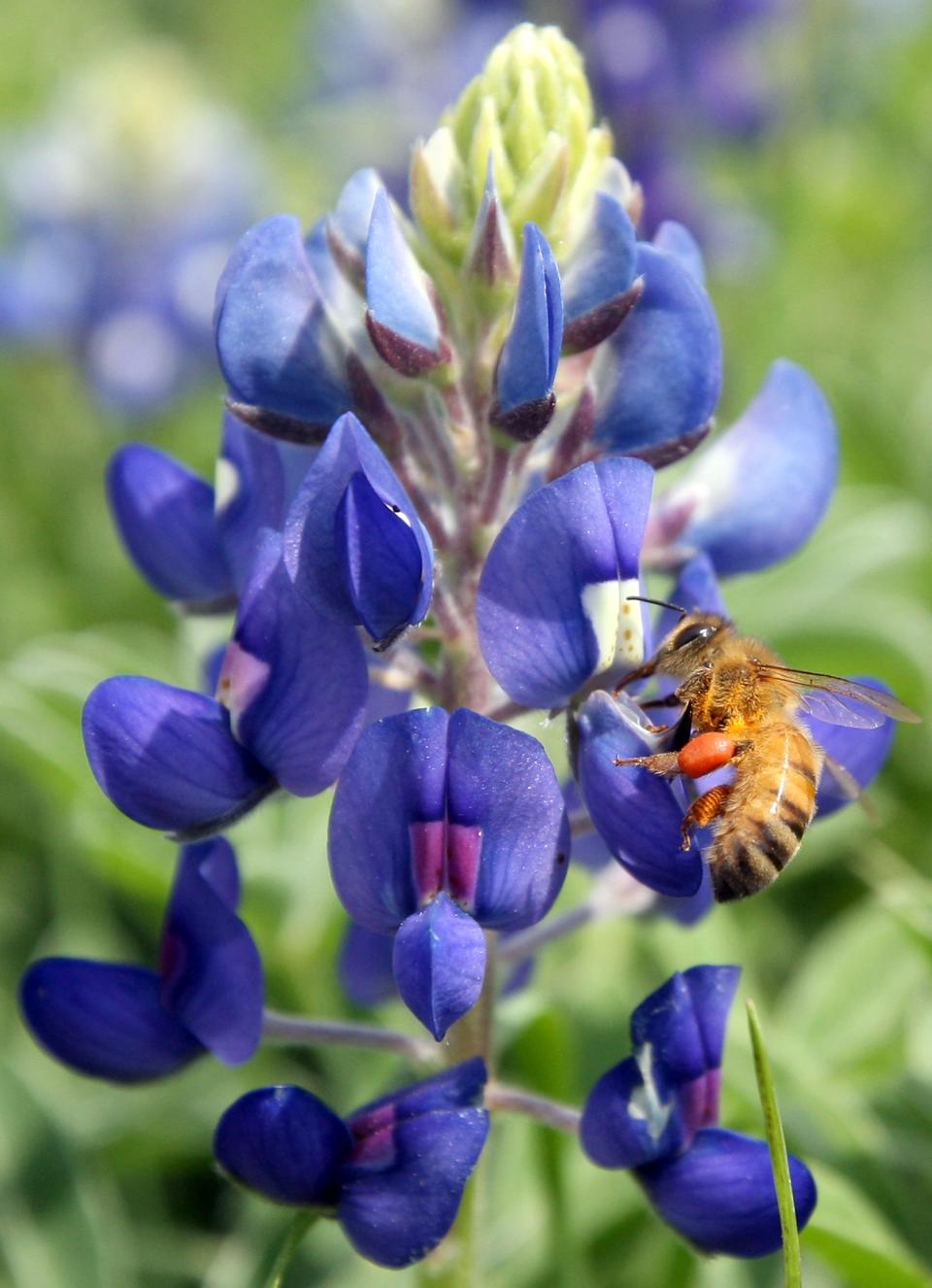
According to the University of Texas at Austin Department of Integrative Biology, there are more than 20,000 bee species worldwide, 4,000 in North America and more than 1,000 in Texas.
Are they harmful? Bees only sting as a defensive measure, so they are not dangerous to most humans. Their stings will hurt and the venom can cause some redness or swelling, but in most cases it will subside after a few hours.
How to get rid of them: Bees are a necessary part of our agricultural system, but can be fearsome to most if there's a hive in your yard. The best solution is to call a local beekeeper or pest control to contain the situation.
Carpet beetles
Carpet beetles are tiny insects and look black, white or green. They are round or oval in shape.
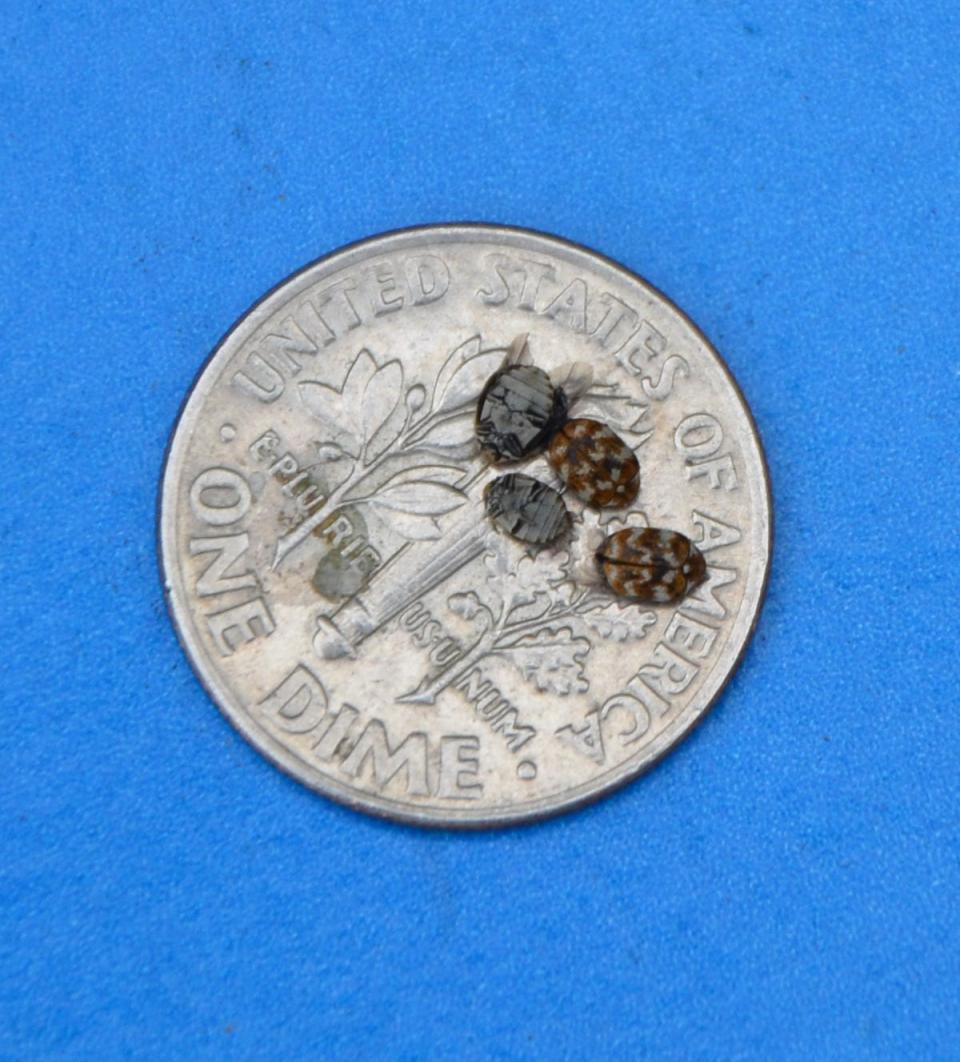
The adults feed on the pollen of outdoor plants, but sometimes get into homes through cracks and crevices. If they get in and start reproducing inside, that’s what leads to a problem.
Are they harmful? These beetles can leave little red bumps on skin that look like bug bites, but they are actually caused by an allergic reaction. These bumps and rashes appear when an allergic person comes into contact with the hairs, or bristles, on the abdomen of carpet beetle larvae, or to the insect's blood.
How to get rid of them: Hygiene and cleaning are the best ways to combat carpet beetles. Consider running all your clothes through the dryer in the hottest setting; dusting and vacuuming your carpets, furniture and shelves on a regular basis thoroughly; and storing food in the refrigerator or plastic containers.
Chiggers
Chiggers are active from late spring to fall in most parts of Texas, but remain active year-round in southern areas, where they can produce up to four generations per year.
Chiggers prefer birds, reptiles, rodents or other small mammals as hosts. Although they readily bite people if given a chance, humans do not make good hosts. Chiggers often do not survive on humans more than one or two days, because of people’s adverse skin reactions and scratching.
Are they harmful? Chiggers are not harmful, just annoying. They don't spread diseases, but scratching could break the skin and lead to irritation or a possible infection.
How to get rid of them: The best defense against chiggers is to avoid them. Wear protective clothing, including long pants, long-sleeved shirts and shoes or boots, when venturing into chigger habitats, such as grassy or brushy areas.
Cicadas
Also called locusts, cicadas are those noisy creatures that live in trees. They have bulging eyes and semi-transparent wings.
You may have seen the shed exoskeleton of a cicada on a tree limb. Adult cicadas do not feed on tree leaves; they suck juices from tender twigs.
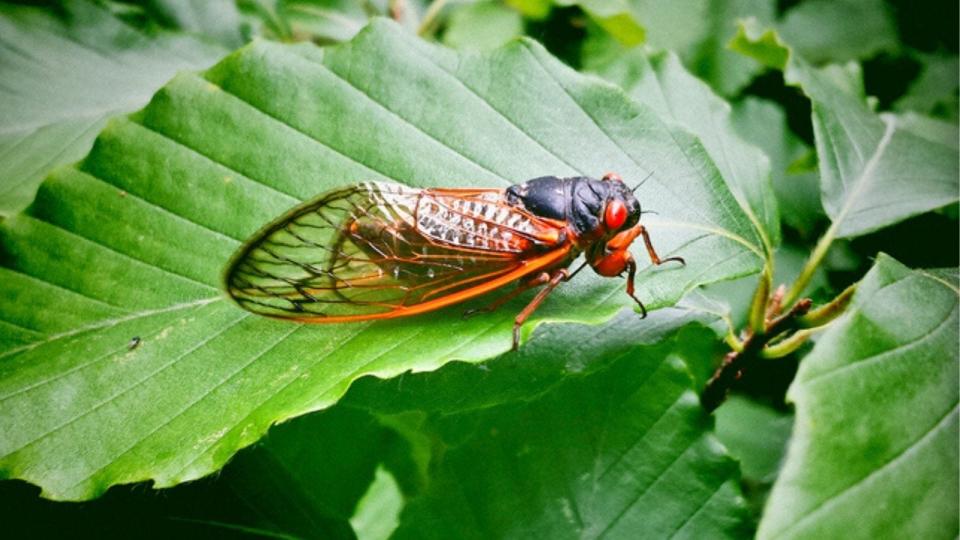
Are they harmful? Cicadas are not harmful to people, despite their loud and somewhat aggressive behavior. Even if they become disoriented and appear to be flying toward you, they will not hurt you.
How to get rid of them: While they are harmless, cicadas can be annoying with their clicking. Cover tender shrubs and fruit-bearing plants with fine netting or cheesecloth to deter cicadas from landing on them. Cicadas aren't fast, so they can also be picked off trees by hand.
Crazy ants
The tawny crazy ant is located mainly in the Gulf Coast region of Texas. Discovered in Houston in 2002, infestations are now found in all Gulf Coast counties extending west as far as the Hill Country. The ants have been identified in more than 27 Texas counties.
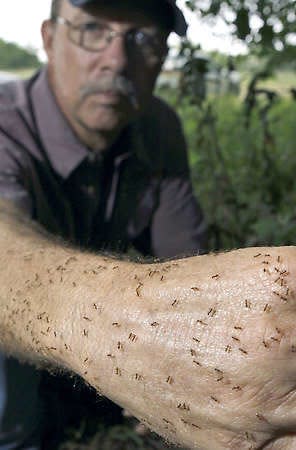
Experts believe these ants, originally from tropical South America, came to North America through shipping. Entomologists report crazy ants, like other ants, are drawn to electronic devices, including car stereos, circuit boxes and machinery. The ants are thought to be climbing into these cavities to investigate possible nesting sites.
Are they harmful? Crazy ants can bite if they feel threatened, but their bites are harmless.
How to get rid of them: Preventing crazy ants can be difficult because they frequently nest both indoors and outdoors. The best way to get rid of crazy ants is with the help of a year-round pest control program. Other solutions include sealing cracks and crevices found in your home's foundation, caulking gaps around windows and doors, trimming bushes and landscaping at your home, removing dead trees from your property and storing outdoor trash cans at a distance from your home.
Fire ants
Thousands of fire ants live in each mound of soft soil. If a mound is disturbed in any way, ants rush out in large numbers, climb on whatever is disturbing the mound and begin stinging. Each ant hangs on with its mandibles and can sting many times.
When the weather gets hot or dry, fire ants tunnel deep into the soil to find cooler temperatures and water, causing their mounds to be unnoticeable and making it seem as if the ants disappear. After heavy rain, numerous mounds will pop up because the ants are trying to move out of the water-saturated soil.
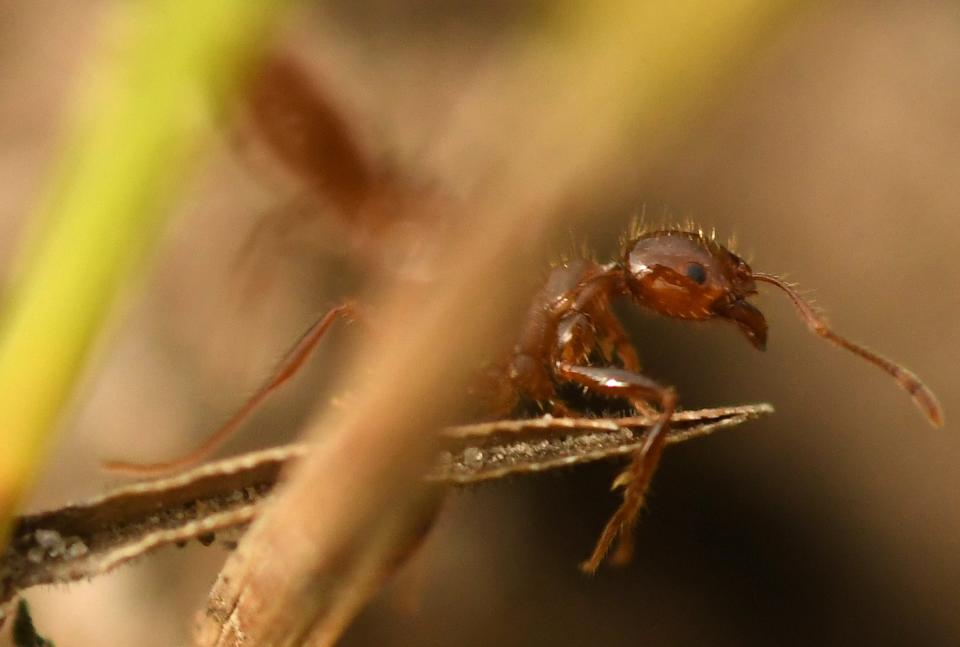
Are they harmful? Fire ant stings burn like fire, hence the name. There is often swelling at the site of the sting. Within a few days, a small pustule forms where the stinger was inserted into the skin, and the area often is itchy. Some people are sensitive to fire ant venom, causing the sting area and sometimes an entire finger, foot, hand or limb to become swollen. Others are so allergic to the venom that a sting can cause a serious, life-threatening allergic reaction.
How to get rid of them: To prevent fire ants, you need to eliminate their food source, water supply and place to live. Do this by keeping trees and shrubs trimmed, keeping mulch and straw raked away from your home, removing ripe fruit from trees and collecting any fallen fruit off the ground. If you have an infestation, pour boiling hot water on their mounds. Be careful — it will kill any nearby plants, as well.
Fruit flies
Fruit flies are pesky, especially indoors. They are almost impossible to keep out of homes because they are very good at smelling out food.
Fruit flies have the potential to pop up in a home any time of the year, but the summer and fall seasons are when these pests are most problematic for people. A single female fruit fly can lay 500 eggs in her very short lifetime — one week.
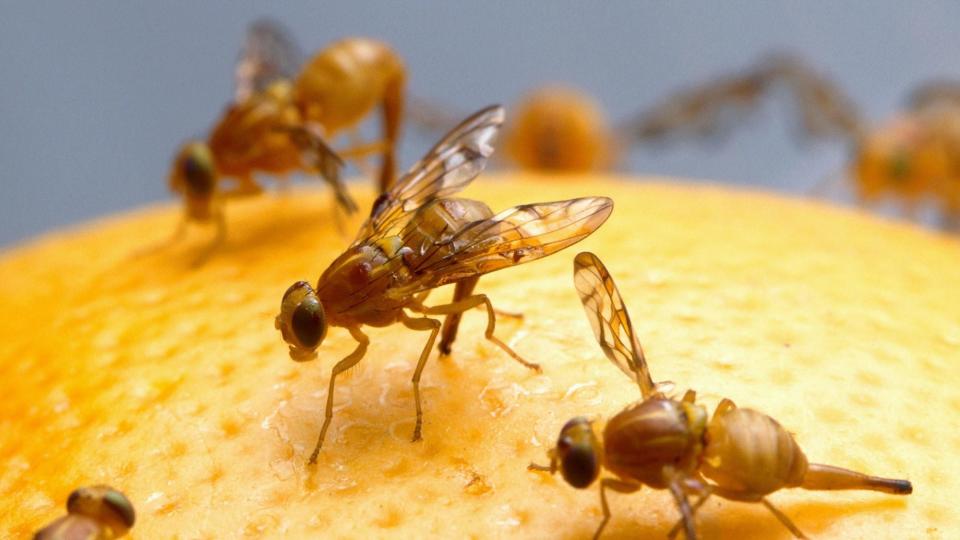
Are they harmful? Fruit flies are more of a nuisance, but they are a possible human health hazard. Dangerous bacteria and other germs can stick to their hairy bodies, get on our food or hands, and spread illnesses that cause health problems, including diarrhea.
How to get rid of them: Removing the breeding site is the best way to get rid of fruit flies. Fruit flies just need a little moisture in their food to breed, and larvae feed on decaying plant material, including fruits and vegetables. They also are attracted to wine and beer, vinegar and other sugary beverages. Cleaning and wiping up any spills on countertops or floors, especially cracks in flooring, will reduce the likelihood of an infestation. Another method is setting traps with apple cider vinegar or wine. Pour the mixture into a plastic bowl and a few drops of soap to drown flies that attempt to land in the solution.
Gnats
There are five commons species of gnats in Texas: biting midges, buffalo gnats, fungus gnats, gall gnats and eye gnats.
In addition to disrupting fun outdoor activities, they can cause itchy bites on humans and spread fatal illnesses among animals.
Are they harmful? Females of some species, including fungus and eye gnats, feed on blood. These gnats have been known to carry parasites and spread diseases to humans and livestock.
How to get rid of them: Using insect repellent helps reduce gnat bites. In addition, wear clothing that covers the skin and, if possible, avoid areas where biting gnats are actively feeding. Other solutions include drying out moist areas such as outdoor potted plants, fixing leaky pipes, maintaining proper sewage treatment and covering outdoor garbage.
Kissing bugs
Kissing bugs, also called cone-nose bugs or chinches, feed on blood from people and other animals. They are mostly active during the night.
They get their name because people used to think they mostly bite around the mouth or eyes like a kiss. Unfortunately, they do not just bite the face; they bite anywhere on the body that they can access.
Are they harmful? Kissing bugs are insects that may be infected with Trypanosoma cruzi, the parasite that causes Chagas disease. The disease can be mild, causing swelling and fever, or it can be long lasting. Left untreated, it can cause congestive heart failure.
How to get rid of them: Plug any gaps around doors and baseboards, and fix any holes in window screens. Keep the area under and around your house neat. Remove wild animal nests, piles of branches and wood, and trash so that wild animals stay away from your house. Wild animals can carry the parasite and also be blood sources for kissing bugs. Turn off outside lights at night if you're able; keeping the lights off can keep the kissing bugs from coming near.
Mosquitoes
Don't freak out, but Texas has more than 80 mosquito species. Texas mosquitos needs moist, warm climates and water to thrive. That's why they pop up after summer rain.
Once a mosquito hatches its eggs in water, they become mosquito larvae. All mosquitoes undergo four different stages: egg, larva, pupa and adult. The life cycle of a mosquito usually takes about a month.
Are they harmful? Some of the diseases mosquitoes carry are Eastern equine encephalitis, Zika virus, West Nile virus, chikungunya and dengue fever. In addition, mosquito bites can cause severe skin irritation through an allergic reaction to the mosquito's saliva; this is what causes the red bump and itching.
How to get rid of them: Eliminate standing sources of water, including bird baths, toddler pools and overwatered grass. Citronella candles and mosquito repellent will help combat mosquitoes. If you’ve got a green thumb, plant lavender, lemongrass, basil, rosemary or any variety of mint to keep mosquitoes at bay.
Roaches
Here in Texas, the heat can bring in cockroaches looking for a dark, damp place to escape. Roaches are among the most common pests in homes, schools and businesses.
The most common types of cockroaches in Texas are the American cockroach, German cockroach, oriental cockroach and smokybrown cockroach. Most roaches have wings and can grow up to 2 inches long.
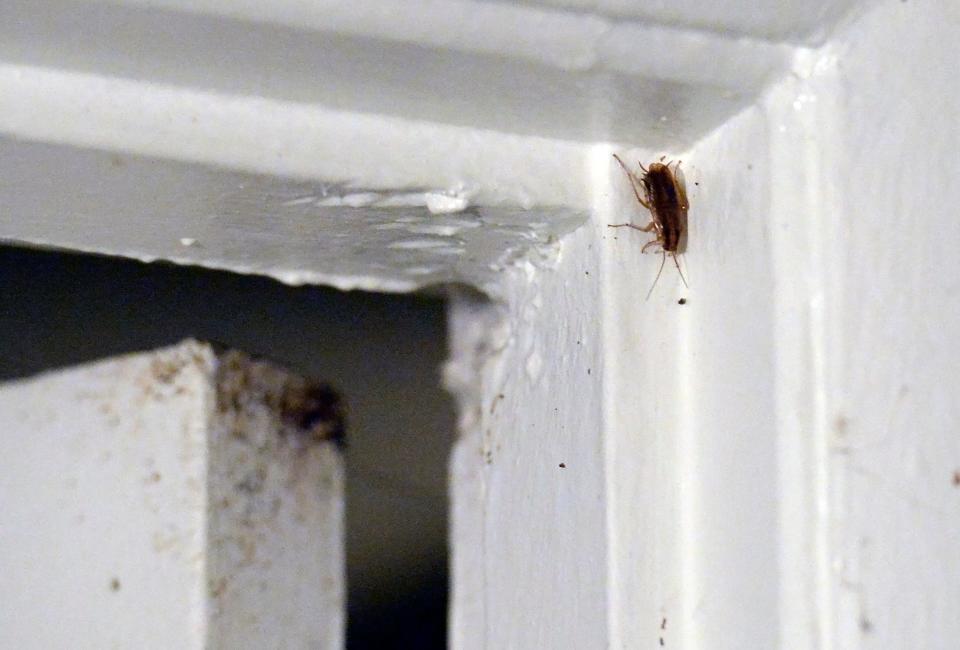
Are they harmful? Roaches can often contaminate food products and carry harmful bacteria and worms. Although they haven’t been linked to any specific outbreaks, they may play a role in spreading certain infections. People with asthma and similar allergies can have an adverse reaction to the presence of roaches.
How to get rid of them: Roaches are the most common pest in Texas, but to prevent them from coming inside your home, you should take out your garbage routinely, keep tight lids on garbage bins, routinely clean, fix leaks and get rid of cardboard not being used. If you have an infestation, your best bet is to call your local pest control to handle the situation.
Scorpions
Fortunately, there are no poisonous scorpions found in Texas that can affect the nervous system or cause paralysis, heart irregularities or death. However, the scorpions that do live in Texas can deliver a painful sting that can result in a mild or moderate reaction.
Scorpions prefer dry habitats but live throughout all parts of Texas. Scorpions have two eyes on the top of the head and usually two to five pairs of eyes along the front corners of the head. They do not see well and must rely on the sense of touch for navigation and detecting prey.
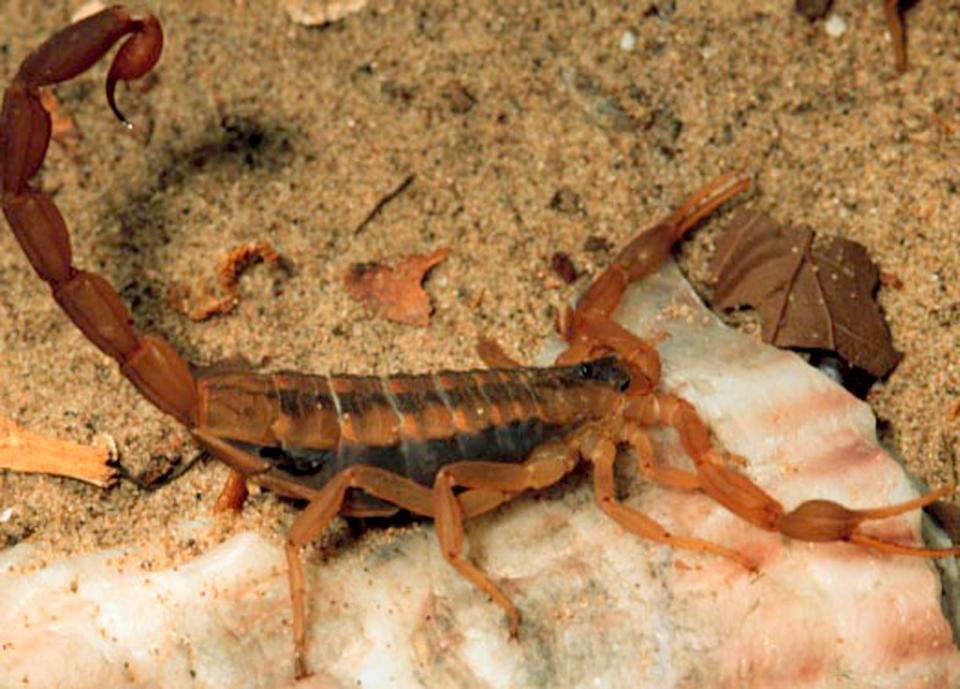
Are they harmful? The stings from Texas scorpions produce only moderate reactions in most people because the poison has little effect on the nervous system. Severity of the sting is dependent upon the individual scorpion and the person’s reaction to the venom. The sting is similar to a bee sting.
How to get rid of them: Insecticides are not effective against scorpions. To help get rid of the pests, keep grass closely mowed, remove leaf litter and mulch, use weather stripping around doors and windows, repair leaky air conditioners and regularly sweep and maintain your patio and garage.
Silverfish
Also known as fish moths, silverfish prefer to live in moist areas with a relative humidity of 75% to 95%, and they often make their homes in bathrooms, attics and basements. In drier climates, they tend to invade homes as a matter of survival to find a moist living space.
Silverfish can be found around clothing, carpets, rugs, photos, papers, plaster, books, adhesives, tapestries and certain foods, including coffee and sugar.
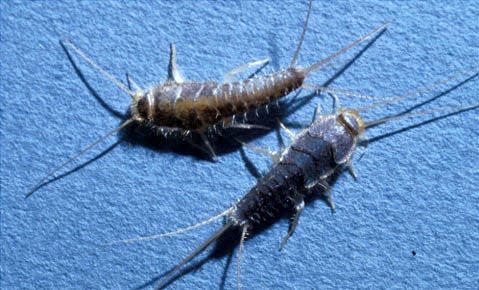
Are they harmful? Silverfish won't hurt you but can contaminate food, damage paper goods and stain clothing.
How to get rid of them: Clean out closets, regularly vacuum, use airtight food storage and use cedar oil in a diffuser.
Stink bugs
There are a number of different species of stink bugs common in Texas, including the conchuela stink bug, the brown stink bug, the harlequin bug, the rice stink bug and the spined shouldered stink bug.
Stink bugs get their name from their defense mechanism of spraying stink juice from holes all over their body when frightened, or if you squish them.
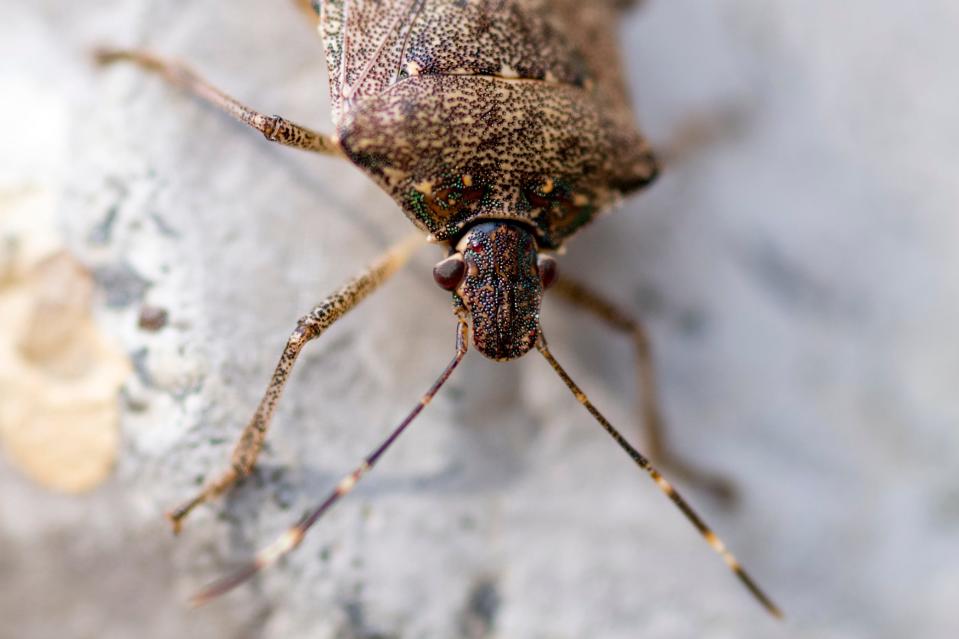
Are they harmful? Stink bugs rarely bite humans, and they are not known to transmit pathogens or harmful bacteria. They just release a smelly odor.
How to get rid of them: Seal off entry points to your home, keep porch lights off, fix leaky pipes and maintain proper landscaping of your yards.
Termites
A single termite might not look particularly destructive, but a colony of termites can cause hundreds, even thousands, of dollars in damage in a short amount of time.
Texas is home to two main types of termites: Formosan subterranean termites and southeastern drywood termites. As the weather warms up, termite populations across the Lone Star State surge and begin searching for new structures to invade.
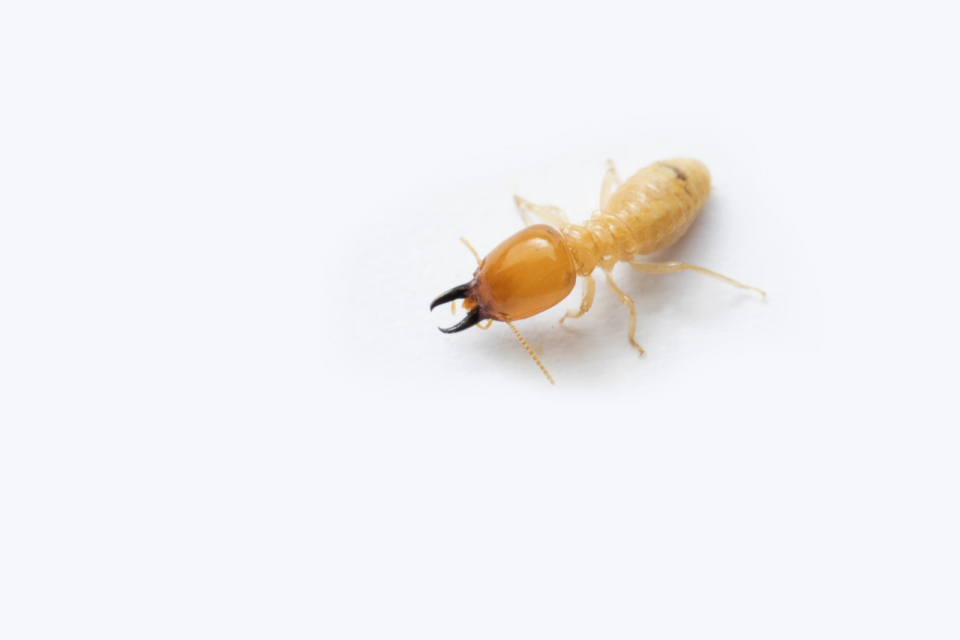
Are they harmful? They will not sting, bite, contaminate your food supply or spread disease like some other types of pests. However, termites are harmful to your home.
How to get rid of them: The best way to get rid of termites is contacting your local pest control.
Wasps
There are several species of wasps in Texas, including the Texas yellow jacket, the bald-faced hornet, the cicada killer wasp, the great golden digger wasp and the cricket hunter wasp.
Did you know wasps are just as valuable as bees are to the agricultural ecosystem? Wasps serve as predators, act as pollinators and help disperse seeds, among other useful functions.
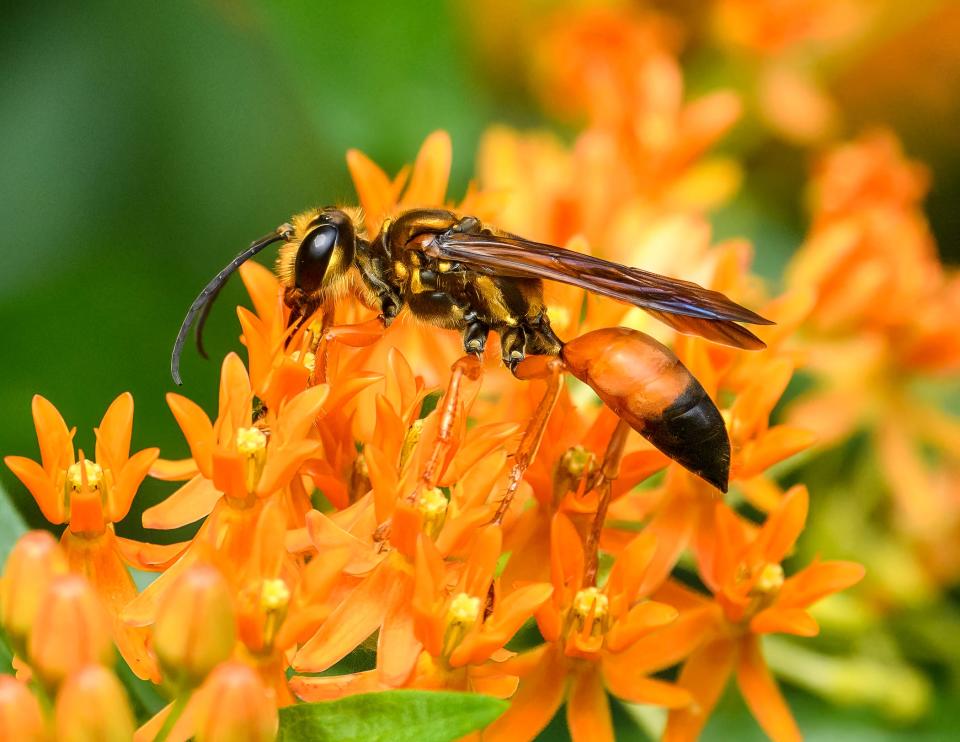
Are they harmful? Wasps are aggressive and territorial. Unlike bees, they will use their stinger several times if someone, or something, approaches their nest or threatens them.
How to get rid of them: Leave a wasp nest to the professional and call your local pest control. If you want to take matters into your own hands, consider purchasing an insecticide to spray on nests.
MORE COVERAGE
More: Bay Jammin' Cinema Series returns to Cole Park for summer with 11 family-friendly films
More: Looking for a summer camp for your child? Check out these 2022 Corpus Christi camps
John Oliva covers entertainment and community news in South Texas. Contact him at john.oliva@caller.com or Twitter @johnpoliva. Consider supporting local journalism with a subscription to the Caller-Times.
This article originally appeared on Corpus Christi Caller Times: Here's 17 summer pests you should be aware of in Texas

